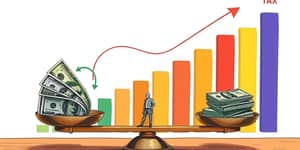
In today’s fast-paced world, managing piles of paper receipts can feel overwhelming. From small business owners balancing ledgers to families tracking budgets, paper statements often get misplaced or damaged. By moving to digital records, you can regain control over your finances, boost efficiency, and even support environmental efforts.
Embracing a digital-first approach is not just about convenience—it’s about transforming the way we manage money, making every transaction transparent and every document instantly accessible. Let’s explore how keeping digital copies of your receipts and statements can revolutionize your financial life.
One of the most compelling reasons to switch to digital records is real-time expense tracking and insights. When receipts are captured instantly, you gain immediate visibility into spending patterns, enabling you to spot trends and adjust budgets on the fly.
Digital receipts also mean easy retrieval and searchability. Instead of rifling through folders, you can type a keyword or date and find exactly what you need in seconds. This level of organization brings unmatched clarity to personal finances and business accounting alike.
Modern digital receipt systems offer a suite of powerful functionalities designed to streamline record-keeping and reporting:
By leveraging these features, businesses can reduce manual work by up to 80%, while individuals save precious hours each month that would otherwise be spent organizing paper documents.
The global digital receipts market is on a rapid growth trajectory. In 2023, its value stood at USD 2.1 billion, and projections estimate it will reach USD 5.1 billion by 2033, driven by rising consumer demand and corporate sustainability goals.
This expansion, corresponding to an 11.5% CAGR over the next decade, highlights the increasing priority organizations place on digital transformation. Retail leads adoption with over 45% market share, while sectors like apparel boast 71% uptake. Even industries slower to change are beginning to invest in digital receipts to meet consumer expectations.
Transitioning to a digital receipt system requires a careful approach to security and governance. Organizations must implement robust encryption, two-factor authentication, and regular vulnerability assessments to safeguard sensitive financial and personal data.
Equally important is establishing clear data retention policies. Define how long digital receipts will be kept, who can access them, and procedures for secure deletion. This not only ensures compliance with privacy regulations but also helps manage storage costs effectively.
Getting started is simpler than you might think. Follow these steps to create a reliable digital record-keeping process:
By following these guidelines, your organization or household can enjoy proactive financial decision-making processes and stay prepared for audits, tax filings, and strategic planning.
Beyond the operational advantages, digital receipts play a critical role in environmental stewardship. By cutting paper waste, businesses reduce their carbon footprint and signal a commitment to responsible practices. Consumers who choose digital receipts help minimize deforestation and landfill contributions.
Ultimately, the shift to digital record-keeping represents a powerful opportunity. It improves accuracy, saves time, lowers costs, and fosters a greener planet. Whether you’re a solopreneur, a startup, or a large corporation, adopting digital receipts is a strategic move that yields both immediate benefits and long-term value.
Managing receipts and statements digitally is no longer a luxury—it’s a necessity. With environmental sustainability and cost savings at stake, combined with enhanced security and efficiency, the case for digital records has never been stronger.
Take the first step today: choose a platform, establish clear policies, and train your team. Soon, you’ll experience the freedom of instant access, reliable documentation, and the peace of mind that comes with a well-organized financial system.
Transform your record-keeping routine and join the movement toward a more efficient, transparent, and sustainable financial future.
References













